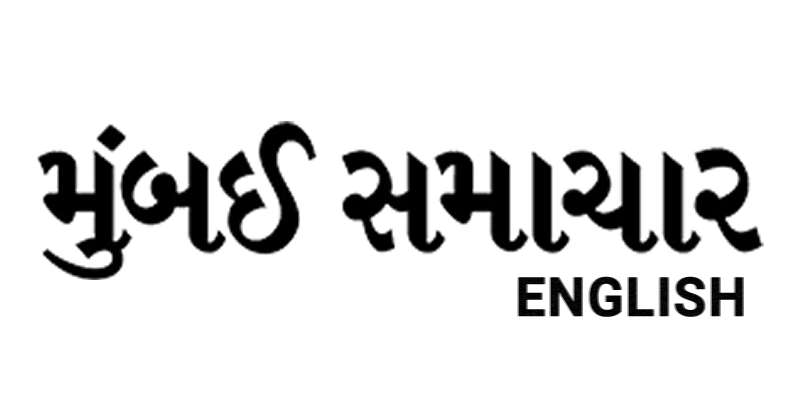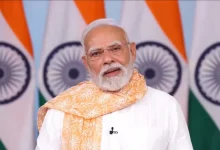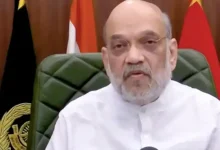David Headley’s Testimony Revealed Tahawwur Rana’s Link in the 26/11 Attacks

More than 16 years after the devastating 26/11 Mumbai terror attacks that killed 166 people and injured hundreds, a key accused—Tahawwur Hussain Rana—is being extradited from the United States to India. His return marks a significant step in India’s ongoing efforts to bring all conspirators of the 2008 attacks to justice. Rana’s connection to the plot was first revealed by his longtime friend and convicted co-conspirator, David Coleman Headley, during his testimony in a Chicago courtroom. Headley disclosed that Rana had assisted him in establishing a bogus immigration office in Mumbai, which was used to conduct surveillance on potential terror targets.
Also read: 26/11 Hero Calls for Swift Justice as Tahawwur Rana Faces Extradition
Rana, who was earlier convicted in the US for aiding Lashkar-e-Taiba and supporting a planned attack in Denmark, will now be subject to interrogation by Indian agencies as they investigate his deeper role in the Mumbai attacks. Security has been intensified around Delhi’s Patiala House Court, where Rana is expected to make his first appearance following extradition.
Who is Tahawwur Hussain Rana?
A 64-year-old Pakistani-born Canadian citizen, Rana once served as a medical officer in the Pakistan Army. He was born in Chichawatni, Punjab, and studied medicine before joining the army’s medical corps. After leaving the military, he moved to Canada and later to the United States, where he founded First World Immigration Services, a business which later became a front for his and Headley’s terror-linked activities.
His Link to David Headley
Rana and Headley met as teenagers at a military school in Pakistan and maintained their friendship over the years. That bond later became central to the planning of the 26/11 attacks. Headley, a Pakistani-American, was recruited by Lashkar-e-Taiba (LeT) to scout potential targets in India. Investigators allege Rana knew of Headley’s links to LeT and provided critical support for his mission, including financial backing and help with logistics.
Also read: Govt Appoints Narender Mann as Special Prosecutor in Tahawwur Rana 26/11 Case
Allegations in the 26/11 Attacks
According to India’s National Investigation Agency (NIA), Rana played a facilitative role in the attacks by:
- Assisting Headley in securing a visa to India.
- Allowing the creation of a fake Mumbai-based branch of his business for reconnaissance.
- Funding and supporting multiple scouting trips across India between 2006 and 2008.
- Visiting several Indian cities with his wife prior to the attacks.
- Maintaining frequent communication with Headley, with over 200 phone calls cited as evidence.
Investigators also link Rana to Major Iqbal, an alleged ISI handler and one of the masterminds behind the plot.
Legal History and Extradition
Rana was arrested in the US in 2009, shortly after Headley confessed to plotting attacks in both India and Denmark. While Headley turned approver and cooperated with US authorities, Rana denied any involvement. However, a US court in 2011 convicted him for supporting terrorism in connection with the Danish plot and LeT, though he was acquitted of direct involvement in the Mumbai attacks. He was sentenced to 14 years in prison.
In 2020, India formally requested his extradition, and after years of legal proceedings, the US Supreme Court denied his appeal, clearing the way for his transfer.
What the FBI and Courts Said
US officials strongly condemned Rana’s role. The FBI noted that he provided “critical support” from the US for Headley’s operations. Top prosecutors, including Assistant Attorney General Lisa Monaco and Acting US Attorney Gary Shapiro, emphasized that Rana’s conviction should serve as a warning to others aiding terrorist activities, regardless of their location.
What Headley Revealed About Rana
In court, Headley stated that:
- He was ordered by LeT in 2005 to carry out surveillance in India.
- Upon returning to the US, he briefed Rana, who approved the plan.
- Rana permitted the use of his business to create a front office in Mumbai.
- Staff were directed to help Headley with documentation and visa processing.
- Headley had multiple communications with Rana during his India visits.
These revelations were crucial in the US case against Rana.
Also read: 26/11 Suspect Tahawwur Rana About to Land in India, Set for Tihar Jail Confinement
What Comes Next?
Rana will be produced before a special NIA court in Delhi. Authorities have increased security at the court and are prepared to house him in Tihar Jail’s high-security wing. The NIA aims to interrogate Rana to uncover:
- Possible involvement of Pakistani state actors.
- Detailed planning and funding routes for the attacks.
- Associates involved in India and abroad.
- Evidence against fugitives like Hafiz Saeed, Zaki-ur-Rehman Lakhvi, and ISI officers.
Rana’s extradition could provide critical insight into the full scope of the 26/11 conspiracy, potentially implicating additional figures in Pakistan’s terror infrastructure.




